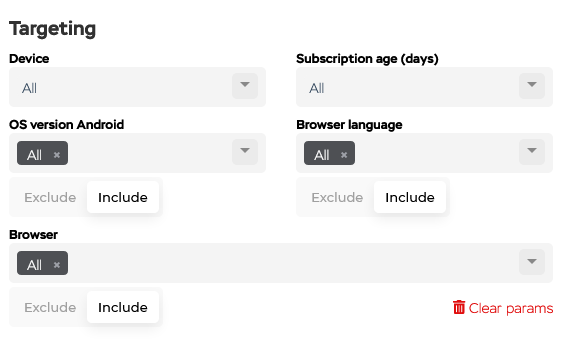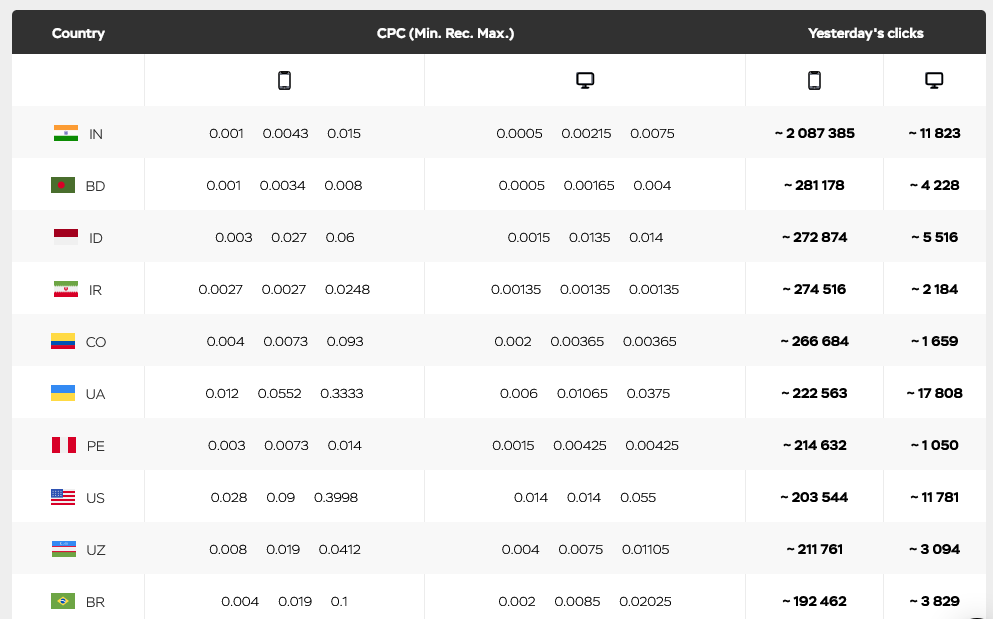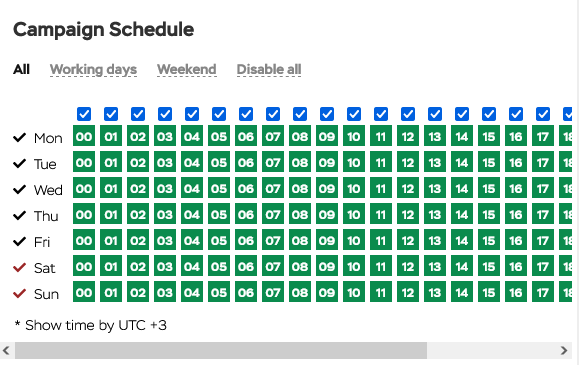
How to Optimize an Advertising Campaign in Push.House
After launching an advertising campaign, the next crucial step is its optimization. The success of your ongoing promotion will depend on how skillfully and effectively this process is carried out. In this article, we will explore the fundamental principles of optimization in Push.House and discover how to achieve maximum success after making changes to your campaign settings.
What is Optimization?
Optimization involves making changes to various components of your campaign to maximize profits while simultaneously reducing promotion expenses. In Push.House, optimizing advertising campaigns includes: hypothesis testing, improving creatives and headlines, as well as the ability to adjust targeting parameters, change bids, and much more.
The optimization process begins after the advertiser has achieved a sufficient number of conversions. The information obtained during the initial days of the campaign plays a crucial role in improving specific elements of the campaign.
If your campaign doesn’t yield conversions in the first few days, there’s a chance that the offer is not in demand in a specific region. This is rare. More often, the issue is related to creative elements, targeting settings, or the quality of the landing page. It’s recommended to start the optimization process after obtaining 7-10 conversions.
How to Conduct Optimization
After the initial run, the advertiser can start optimizing their ad campaigns, doing the following:
Hypothesis Testing
Understanding that the audience for one offer may exhibit different behaviors in different traffic sources is a key aspect of preparation for analysis. To identify traffic patterns and determine the most successful components of your campaign, it’s important to conduct split testing (A/B testing).
Split testing is one of the most crucial aspects of optimizing advertising campaigns. To understand which approach is most effective for a specific audience, it’s essential to test several combinations. The key principle of A/B testing is to test different hypotheses by changing one specific parameter within the campaign while keeping the others constant.
The goal of A/B testing is to find the best approach for promotion. Don’t hesitate to experiment with various versions of ad creatives, change headlines, icons, button texts, images, as well as targeting settings. Test not only the visual elements of your advertising campaign but also device types, operating systems, browsers, promotion regions, and more. Anything that can be changed within your advertising campaign and can result in a new combination—change it.
After making changes, launch each version of the advertising campaign and closely monitor its effectiveness. A high click-through rate (CTR) will indicate which combination is most relevant to your offer’s audience. The higher the CTR, the better the combination.
Determining the exact duration of an A/B test can be challenging. Much depends on the characteristics of the offer and the current competitive situation in the market. The primary guideline is the volume of data obtained since the campaign’s launch. When you have enough data for analysis, you can stop the least effective advertising campaigns. For subsequent scaling, incorporate effective changes into the settings of stopped advertising campaigns and continue the promotion.
Ignoring A/B testing is a common mistake among advertisers, leading to a loss of efficiency and advertising budget. Learn more about other common mistakes made during the campaign launch and how to avoid them in our material
Targeting
When initially launching a campaign, it’s recommended to start with a broad audience. As you gather data, evaluate the click-through rates from various operating systems, browsers, and devices. Sometimes, you can identify patterns where more clicks come from specific types of devices or operating systems. In such cases, consider targeting users matching these characteristics.


Similarly, it is recommended to configure and optimize the other targeting parameters. Exclude ineffective parameters that may lead to unwanted ad budget expenditures. Focus on the most profitable regions where your leads are coming from.
Whitelists and Blacklists
The core part of optimizing an advertising campaign is related to audience targeting settings. In audience settings, you can create and manage white and blacklists of IP ranges, site IDs, and subscription IDs for retargeting. This allows you to precisely tailor ad displays to the most promising segment of traffic.
To set up campaign rotation on specific sites, you need to create white and blacklists. A white list will be useful if you are interested in traffic from specific sites. Conversely, a black list is handy for excluding ad displays on sites that showed the lowest conversions during the launch.
Contact the Push.House manager to get started
Bidding
The bid you specify in your advertising campaign settings affects the frequency of displaying your ad notifications on users’ devices. If you want to increase the number of displays, consider setting the bid within the range specified in the “Network Volume” tab in your Push.House account.
To control your ad campaign’s position in the auction, use the Win Rate metric.


It’s especially important for advertisers to monitor both the minimum and maximum bid in the auction daily to minimize budget losses. The Push.House RTB auction operates in real-time, so changing your bid immediately impacts the display frequency. To receive current bids, contact a Push.House manager or go to the “Network Volume + Feeds” tab in your account.
Ad Scheduling
If your offer involves a follow-up call from a call center, inquire with your affiliate program manager about when the call center accepts orders. Afterward, you can set up ad displays to avoid losing budget during the hours when the call center is not making calls for order clarification and delivery.
Naturally, there is a possibility that users will take the desired action during non-working hours of the call center. However, according to statistics, the longer the time between submitting an application and the first contact with the call center, the lower the likelihood of a successful conversion.
After identifying these time intervals, configure ad suspension during the corresponding hours.


Feed Integration
At the initial stage, we recommend targeting only the internal Push.House base without connecting additional feeds. Connecting additional feeds should only be considered when you plan to scale your advertising campaign.
It’s important to understand that connecting new feeds simply means increasing traffic volumes. Guaranteeing successful promotion through feeds is impossible. To determine the most effective promotion options, testing is required. The value of connecting new feeds and the decision to continue using them can only be assessed after the appearance of the first leads.
Conclusion
In conclusion, it’s important to emphasize that each advertising campaign is unique and requires an individual approach. The recommendations presented in this material will help you minimize budget losses and achieve maximum profit, provided that you analyze the first days of the launch correctly.
Best of luck!










